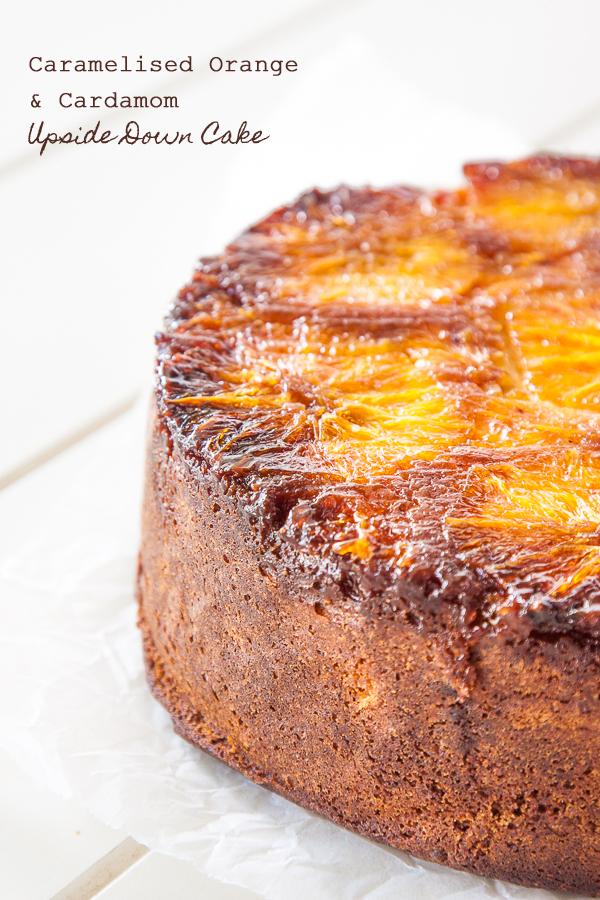THE SPIRITUAL BACKGROUND OF VEGAN “MEAT OF THE FIELDS” – and A RECIPE FOR HOMEMADE SEITAN
Vegan Mainstream –
I grew up in California, most of that time in San Francisco, within walking distance to Fisherman’s Wharf. The majority of the rest of my life has been spent on the West Coast of British Columbia (pre-and-post-vegan). My father was Peruvian, with an Italian mother. These facts alone might explain why I have seafood cravings to this day, 25 years after becoming vegan.
Some vegans, the ones who turn up their noses at any sort of replication of animal proteins, might say “get over it and eat some nori seaweed” (which I do from time to time), but inventing dishes is my craft, if you will. I can’t help being inspired by memories of the delicious meals of my past. I have a keen memory for outstanding meals—the tastes, smells and textures of certain dishes.
Don’t get me wrong—I love beans and grains, nuts and vegetables, and we eat them regularly and enthusiastically. But certain dishes of one’s culture, family background, holiday customs, and where we grew up stick with us, conjure up wonderful memories and feelings of comfort and pleasure. To deny these feelings, especially those of another vegan, out of some effort to be “pure”, even when no animal is harmed, seems misguided to me.
BACK IN TIME
Interestingly, (considering the “purity” angle), fine vegetarian cuisine developed first in Buddhist monasteries. The importation of Buddhism from India during the Han Dynasty (C.E. 58-75) influenced the development of a sophisticated vegetarian cuisine, since one of the five abstentions of orthodox Buddhism is an injunction against taking life. According to Hsiang Ju Lin and Tsuifeng Lin in their book Chinese Gastronomy (Hastings House, NY, 1969):
“Buddhists are vegetarians, consequently a small pocket of gastronomy has developed, fascinating in its attempt to create the ordinary flavours and appearance of fish and meat by using vegetarian ingredients. The Buddhists, whether monks or ordinary people, mingled freely with the non-vegetarians, and because the manners of Chinese society are all-embracing and diffuse, felt obliged to provide food which looked and almost tasted like meat. This was a sign of hospitality.”
Wealthy ladies would make pilgrimages to the city temples, having ordered a vegetarian lunch in advance. (This was apparently one of the few occasions on which wealthy women could go out by themselves.) The authors continue:
“The school of cooking which originated in the temple kitchens expanded and was taken up by the Yangchow cooks, specializing in delicate pastries and noodles. The challenge of simulating textures and appearance was irresistible. They were, in fact, able to reproduce even the intricate diamond pattern of duck skin, by lightly scoring smooth bean curd and filling in the cuts with a soy sauce mixture. Vegetarianism, which had originated for ethical reasons, finally became the gastronome’s business, and fell into the fine hands of the pastry cook.”
The pious Buddhist Emperor Wu (Wudi) of the Liang dynasty (also known as the Southern Liang Dynasty, C.E. 502-557), who donned monk’s robes several times throughout his reign, wrote an essay entitled Forsake Alcohol and Meat, in which he urged Buddhists to become vegetarians. He modelled much of his rule after the Indian Buddhist Emperor Ashoka of the Maurya Dynasty (273 -32 B.C.E), establishing Buddhism as the state religion of China, and prohibiting monks from drinking wine and killing animals. From that time on, vegetarianism in China was linked with the Buddhist prohibition against taking life. To this day, many Chinese and Japanese Buddhists sects prohibit eating meat.
Although tofu and other Chinese soy products are strongly associated with Chinese vegetarian cuisine, it is less well-known that wheat gluten may have been introduced into Chinese cuisine as early as during the reign of Emperor Wu (see paragraph above). The making of a sort of proto-gluten is described in the Chhi MinYao Shu (Notes on Miscellaneous Affairs; C.E .544 [Liang Dynasty]). Eventually, wheat gluten was called mien chin, meaning “the sinew of flour”, and was a well-established term by the Sung period (C.E. 969-1279), mentioned in writings of the time. A passage about iron and steel from Shên Kua’s Mêng Chhi Pi Than (Dream Pool Essays, C.E. 1086) reads: “Steel is to iron as mien chin (gluten) is to mien (flour). It is only after thoroughly washing the dough that gluten is revealed.”
Gluten was mentioned over the centuries by many writers and scholars, even in novels, such as Hsi Yu Chi (Journey to the West, C.E. 1570) and Ju Lin Wai Shi (The Unofficial History of the Literati— C.E. 1740.). This indicates that gluten was accepted outside of the circle of Buddhist ascetics. Recipes for cooking gluten are found in the major culinary works of the Yuan to the Qing (Chhing) Dynasties (C.E. 1279- 1912).
Over the centuries, Chinese chefs devised ever more elaborate recipes for meatless “meats”, “seafood”, and “poultry”. Stella Lau Fessler, in her book Chinese Meatless Cooking, wrote: “To a Chinese cook, imitating certain meat dishes with non-meat ingredients is not simply a matter of replacing the meat. It is instead an effort to show off the great culinary art of China, to make the impossible possible.”
So, this is nothing new, obviously, and we vegan cooks who devise modern homemade meat and seafood substitutes have a great example and proud lineage to follow.
IT’S ALL IN THE NAME
What do we call these products, anyway? “Meat analog” or “meat alternative” or “meat substitute” sound dull and unappetizing, and “gluten”? Well, I’ll let my friend David Lee, founder of the Field Roast Co. from Seattle explain why he coined another term for it: “You know, gluten, the word for wheat protein, is kind of an odd word. I think it’s kind of an unfortunate word. I wish it wasn’t called gluten because gluten is kind of—you know, ‘glue-tahn’—it’s just kind of an ‘uhh’-sounding word. It’s a word that I actually try to avoid.”
As you probably know, David calls his products “grain meat”. He explained to me: “…meat wasn’t exclusively associated with animal meats, or animal flesh. As a matter of fact, I think you can find in any dictionary that the word ‘meat’ used to mean ’food’ or ‘meal’, and also meant ‘substance’ (as in ‘the meat of the story’ or ‘the meat of the matter’). Think also of the word ‘nutmeat’ and how soy was called ‘the meat of the field’ in China.”
He also points out how milk is not exclusively dairy-based anymore—there are bean milks, like soy; grain milks, like oat and rice; seed milks, like quinoa, hemp and flax; and nut milks, such as almond, cashew, coconut and hazelnut. Soy why not “grain meat”, “nut meat”, soy meat” , etc.?
IN THE KITCHEN AGAIN
Delicious modern gluten/seitan/grain meat-based recipes abound on the Internet these days (often with the addition of other grain and legume flours), and in the pages of vegan cookbooks, but it’s difficult to find good recipes to satisfy those seafood cravings I was mentioning before. There are fewer seafood sub recipes online, and there are commercial products that I’ve read about, but they never seem to be available where I live. So I have had to devise my own recipes. There’s a “salmon” recipe in my book World Vegan Feast (Vegan Heritage Press, 2011), but what I miss the most is shellfish—not only the taste, but the texture. The basic recipe I’m going to share with you below is satisfying to me, versatile, inexpensive, freeze-able and relatively easy to make. (I’m also including some favorite recipes using the basic product.) I hope you will enjoy these homemade products as much as I do, and devise your own recipes for using them.
BRYANNA’S GRAIN SEA-MEAT
Serves 16
Yield: about 60 Sea-Meat Scallops + 4 cups Chopped Sea-Meat (to use instead of clams)
INGREDIENTS:
- Mushroom/Kombu Broth: (Make this first and cool thoroughly)
- 5 1/2 cups boiling water
- 10 medium-sized dried shiitake mushrooms or Chinese dried black forest mushrooms
- 1/3 cup dried boletus, mixed wild, or porcini mushrooms
- (or, if necessary, use about 16 shiitakes or Chinese mushrooms and omit the boletus or porcini)
- 1/2 oz dried kombu seaweed
Dry mix:
- 2 cup pure gluten powder (vital wheat gluten) (See this link for how to tell if you have the right product)
- 1/2 cup chickpea flour or soy flour
- 2 teaspoons sugar
- 1 teaspoon onion powder
- 1/2 teaspoon garlic granules
Wet Mix:
- 1 1/2 cups cold Mushroom/Kombu Broth (see above)
- 12 oz extra-firm regular (NOT silken) tofu, broken up
- 1 tablespoon oil
- 1 teaspoon salt
Cooking Broth:
- 3 1/4 cups hot Mushroom/Kombu Broth (see above at top of ingredient list)
- 1 tablespoon vegetarian “oyster” sauce (see recipe and info for commercial brands below)
- 1 teaspoon onion powder
- 1/2 teaspoon garlic granules
DIRECTIONS:
Mushroom/Kombu Broth (Make this first and cool thoroughly):
Soak the mushrooms and kombu in the boiling water, covered, for about 30 minutes, then strain. Freeze the mushrooms for future use in recipes, if you have no use for them right away. Discard the kombu.
To cool off the broth quickly, place it in a shallow dish or bowl and place in the freezer until cool. DO NOT use hot broth in the Wet Mix! Hot liquid will make the seitan stringy.
For the Wet Mix, blend all of the ingredients until very smooth in a blender or food processor.
Mix the Dry Mix ingredients in the bowl of your electric mixer with dough hook attachment, or place them in the bread machine in the order given. Add the cooled Wet Mix and knead for about 10 minutes. (If your bread machine has a dough cycle-two kneads with a long rest in between, use that cycle. Otherwise, just run it through the kneading part and then unplug it and let it rest in the covered container, then plug it in again for another knead, then remove it,) Let rest for about 1 hour, covered.
While the dough rests, you can make your Cooking Broth and have it ready. Then knead the dough for 10 more minutes. (NOTE: You can knead by hand, too, but it’s tougher than bread dough. You may want to let the seitan dough sit for a while to soak up the liquid more thoroughly before you start hand-kneading.)
When done, the dough should be quite shiny and smooth. Avoid breaking it up when you take it out of the bowl.
Divide the dough into 4 equal pieces. Roll each one out on a clean countertop with a rolling pin to make a rectangle about 3/4-inch thick. Cut each rectangle into 4 squares (more or less). Roll the squares out to about 3/8″-thick. The pieces will be thicker after cooking. Repeat until you have rolled all the dough out this way:
Preheat the oven to 300°F.
Place the seitan squares in 2 oiled 9×13″ baking pans. The squares can overlap a bit. Pour half of the Cooking Broth over the seitan in each pan. Cover with foil. Bake 30 minutes. Turn the cutlets over, cover and cook 15-30 minutes more. (You just want to let the cutlets absorb all of the broth, not really brown them, so keep an eye on them.) Separate them carefully. Cool them before proceeding. (You can place them on a platter and cool them quickly in the freezer, if you wish.)
To cut the Sea-Meat Scallops:
Cut as many rounds as possible out of the cooled seitan squares with a 1″ wide or slightly smaller round cookie cutter. (I had to buy a set of round cookie cutters in order to obtain one of this size).
Grind the scraps coarsely in a food processor to use for Chopped Sea-Meat instead of clams.
NOTE: All seitan freezes well.
Nutrition Facts
Nutrition (per serving): 98.3 calories; 22{967bf23b37ec6a673a83041540b3f904a815b4119ddf673afb961c1e7592ebdd} calories from fat; 2.6g total fat; 0.0mg cholesterol; 140.0mg sodium; 73.8mg potassium; 5.3g carbohydrates; 0.5g fiber; 1.3g
sugar; 14.1g protein; 2.1 points.
Tune in tomorrow for more Homemade Vegan Seafood recipes.
Vegan since 1988, author of World Vegan Feast & 7 more vegan cookbooks, Bryanna Clark Grogan has devoted over 40 years to the study of cooking & nutrition. She developed the recipes for Dr. Neal Barnard’s Program for Reversing Diabetes, & contributed recipes to Howard Lyman’s No More Bull! & Cooking with PETA. She has appeared at Vegetarian SummerFest, Vegetarian Awakening, Portland VegFest, McDougall Celebrity Chef Weekend, VidaVeganCon, & Seattle VegFest. She also runs a small branchof the Vancouver Is. Reg. Library system, has studied and performed belyydance for 15 years, likes mystery fiction and British TV, and is interested in social justice issues. She lives on Denman Is., BC, Canada, with her B&W film photographer/baker husband Brian, dog Phoebe, & cats Ringo & Sadie. She has 3 daughters, one son, 2 stepsons and 7 grandchildren, ages 24 to 9.
Join us on the Vegan Mainstream Cookbook Club for more recipes and information this week from Bryanna Clark Grogan.
(c) Vegan Mainstream – Read entire story here.

















